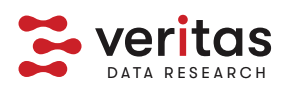Healthcare
Life Sciences, Providers, Payers
Life Sciences
Clinical Trials
- Conduct long term surveillance on trial populations for mortality endpoints
- Eliminate wasted effort on recruitment of trial candidates, and on trial enrollee who are "lost to follow up", who are deceased
Analytics
- Document long-term survival statistics for clinical and longitudinal research (e.g.; creation of cancer survival curves)
- Power health economics and outcomes research (HEOR) studies with critical mortality endpoints
- Bolster sample sizes of traditionally underrepresented populations (e.g., veterans)
Providers
Population Health
- Create better population health and risk models with complete mortality data to better design intervention programs, identify at risk patient groups, and select the most effective treatment protocol
- Eliminate wasted effort on recruitment of trial candidates, and on trial enrollee who are "lost to follow up", who are deceased
Patient Outreach
- Contact list hygiene and master data management (i.e., removing deceased individuals) are critical for successful engagement and appropriate communications
- Eliminate wasted effort on billing / collections for deceased patients
Payers
Risk Modeling
- Understanding mortality in targeted populations can help determine important risk indicators, which can improve decision making for determining eligibility for treatments and influence the cost-efficiency of a preventative intervention.
Compliance and Fraud Prevention
- Complete and timely mortality data allows for rapid removal of deceased individuals form systems or flags for investigation
Credentialing
- Check provider information against the mortality index to ensure that they are not deceased (or using a false identity)
Health Economics and Outcomes Research
Healthcare analytics companies and their customers involved with diagnosing and treating diseases can utilize mortality information to optimize outcomes for individual patients and lower the overall cost of the patient population served.
Population Health
Hospitals and medical centers can improve engagement for population health processes and minimize the administrative work required for following-up with patient populations to encourage compliance with prescription medication usage, best practice exam screening, and notification for new treatment protocol for specific disease cohorts.
Reviewing Provider Credentials
Including Fact of Death in predictive modeling and risk assessment for underwriting solutions or quickly detect when someone is impersonating a deceased patient or doctor for prescriptions or to submit claims for service.
Meeting HIPAA requirements
Veritas’ Fact of Death Mortality Index is not protected health information (PHI) and is not derived from health records.
However, if you wish to bring this dataset into a de-identified data environment and link it to other de-identified data (e.g., merge it with EHR or claims data), Veritas can work within your de-identification and certification processes or refer you to one of our partners. Veritas has partnerships with most major deidentified token/linking vendors and can support your use of their solutions.

Founded by experts in the data analytics industry, Veritas uses cutting-edge technology and efficient workflow design to collect, curate, and distribute foundational reference datasets.
About Veritas
Learn more about Veritas Data Research and its people.
Request Data
With a Fact of Death subscription, customers get access to a file with over 38 million records from 2010 to the present and portal access for searches and further research.

